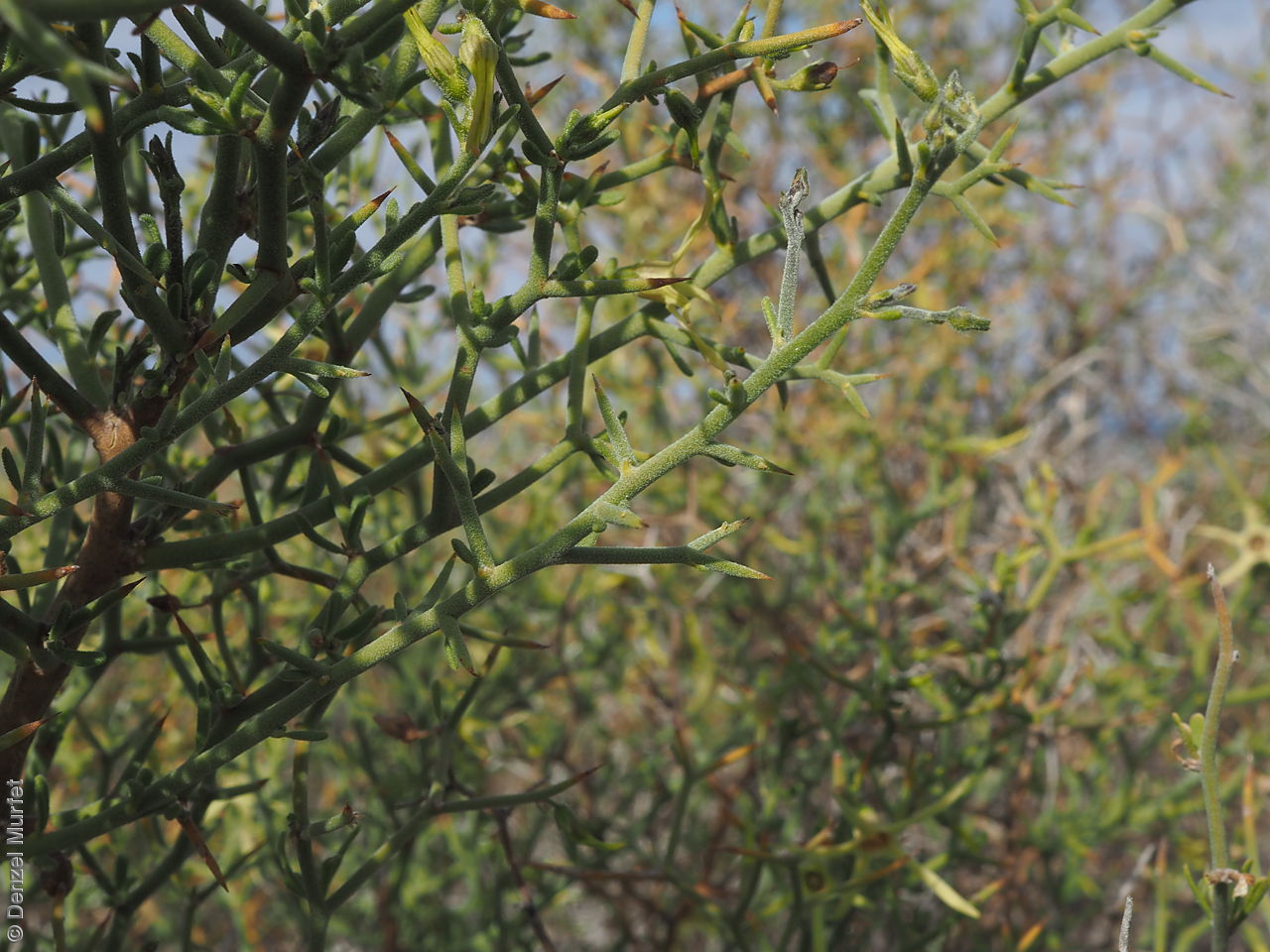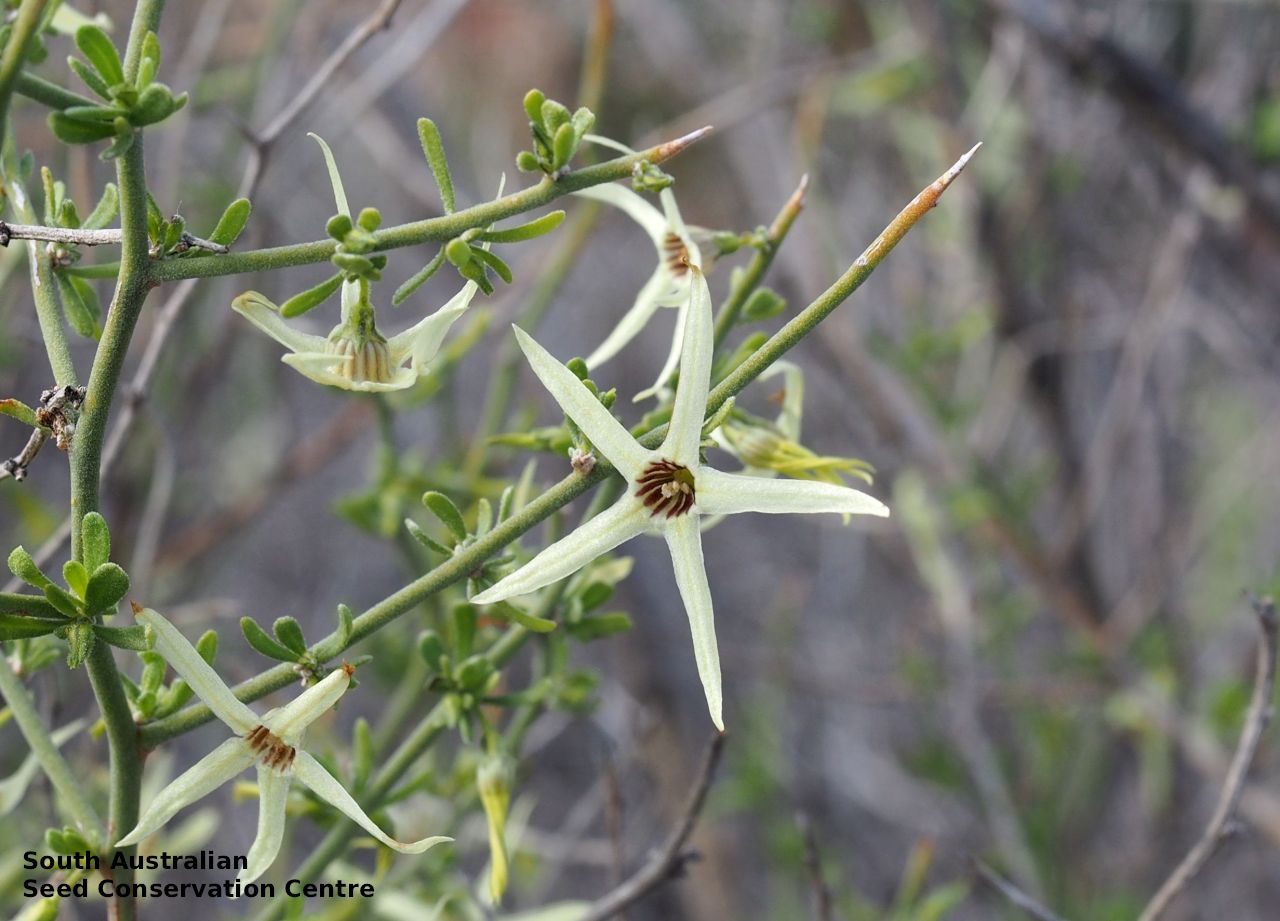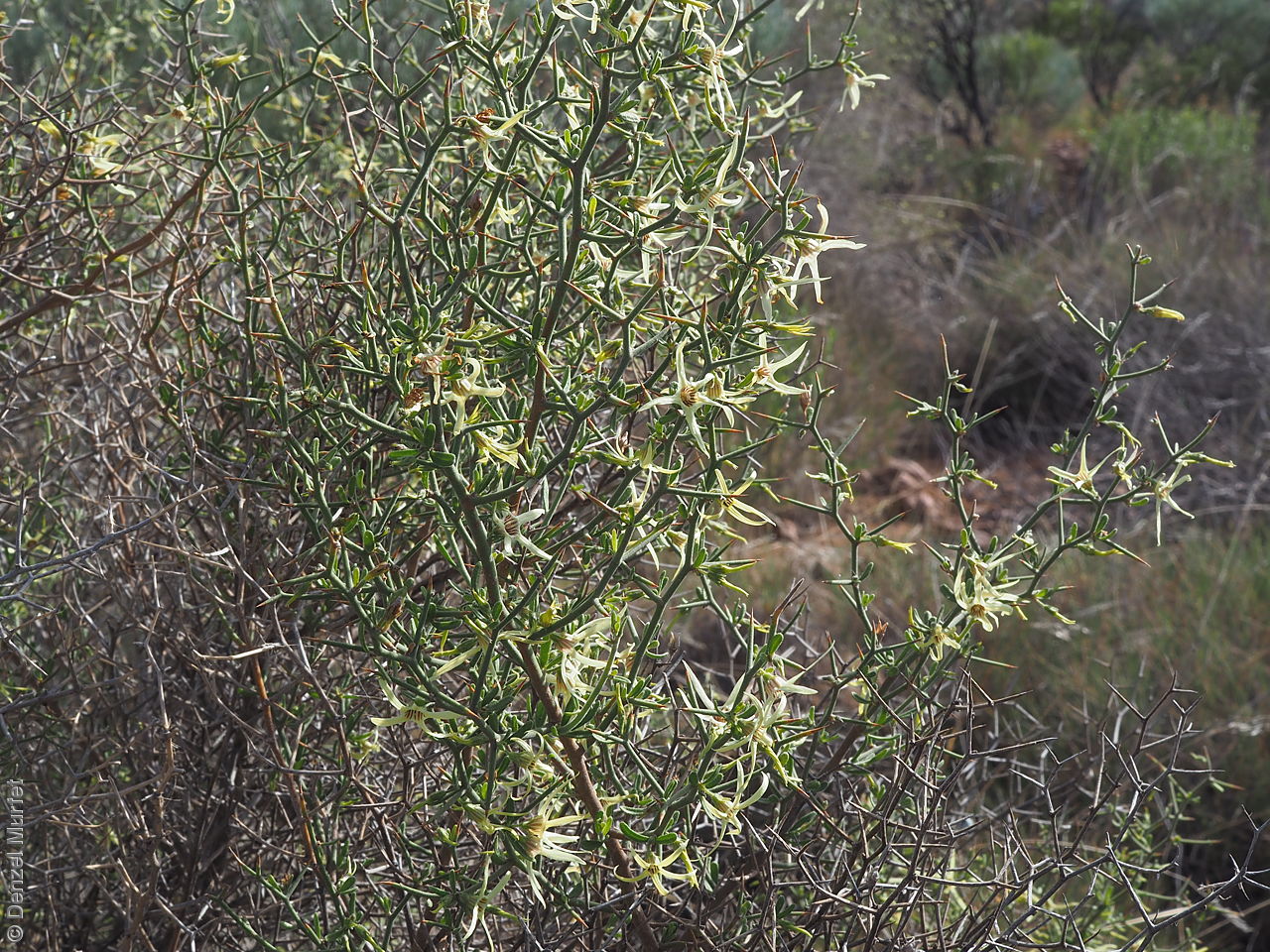

















Botanical art
Common names
Spiny Ray-flower
Gawler Ranges Ray-flower
Etymology
Anthocercis from the Greek 'anthos', meaning a flower and 'kerkis', meaning a ray, referring to the narrow corolla lobes. Anisantha from the Greek 'anison' meaning unequal and 'anthos' meaning flower. Collina from the Latin 'collinus' meaning dwelling on hills, alluding to the subspecies habitat.
Distribution and status
Endemic to South Australia and found in the central and northern Eyre Peninsula, growing in Triodia hummock grassland on rhyolitic-porphyritic hills of the Gawler Ranges and on isolated hilltops further south. Native. Uncommon in South Australia..
Herbarium regions: Gairdner-Torrens, Eyre Peninsula
NRM regions: Eyre Peninsula, South Australian Arid Lands
AVH map: SA distribution map (external link)
Plant description
Intricately branched spinescent shrub to 2.5 m tall, sometimes almost leafless and covered in hairs. Leaves at first borne singly but soon replaced by axillary clusters of 3-10 leaves, sessile, obovate or narrowly, to 14 mm long and 4 mm wide. Inflorescence in axillary clusters with 2-6 pale-yellow to greenish-yellow flowers with purple-brown or maroon striations in the throat. This subspecies differs from the other ies found in South Australia by having predominantly non-glandular indumentum on the branches, rather than glandular indumentum for Anthocercis anisantha spp. anisantha. Flowering between August and September. Fruits are papery brown ovoid capsule to 9 mm long, containing numerous brown seeds. Seeds are bean-shaped brown seeds to 2 mm long and 1 mm wide, covered with honeycomb depressions. Seed embryo type is linear fully developed.
Seed collection and propagation
Collect seeds between October and December. Collect maturing capsulesose that are turning brown, with hard brown seeds inside. Monitor the plants as the capsules will dry, split and disperse the seeds in a short space of time. Using of a small bag (ie. Organza bags) to enclose the developing capsules will help to increase the chances of collecting sufficient viable seeds. Place the capsules in a tray and leave to dry for a week. Then gently rub the capsules by hand to dislodge the seeds. Use a sieve to separate the unwanted material. Store the seeds with a desiccant such as dried silica beads or dry rice, in an air tight container in a cool and dry place. This species is generally difficult to germinate, it has physiological dormancy and complex germination requirements.
| Location | No. of seeds (weight grams) | Number of plants | Date collected | Collection number Collection location | Date stored | % Viability | Storage temperature |
|---|---|---|---|---|---|---|---|
| BGA | 600 (0.255 g) | 20+ | 11-Oct-2017 | TST1377 Eyre Peninsula | 30-Jun-2018 | 90% | -18°C |
Number of plants: This is the number of plants from which the seeds were collected.
Collection location: The Herbarium of South Australia's region name.
% Viability: Percentage of filled healthy seeds determined by a cut test or x-ray.